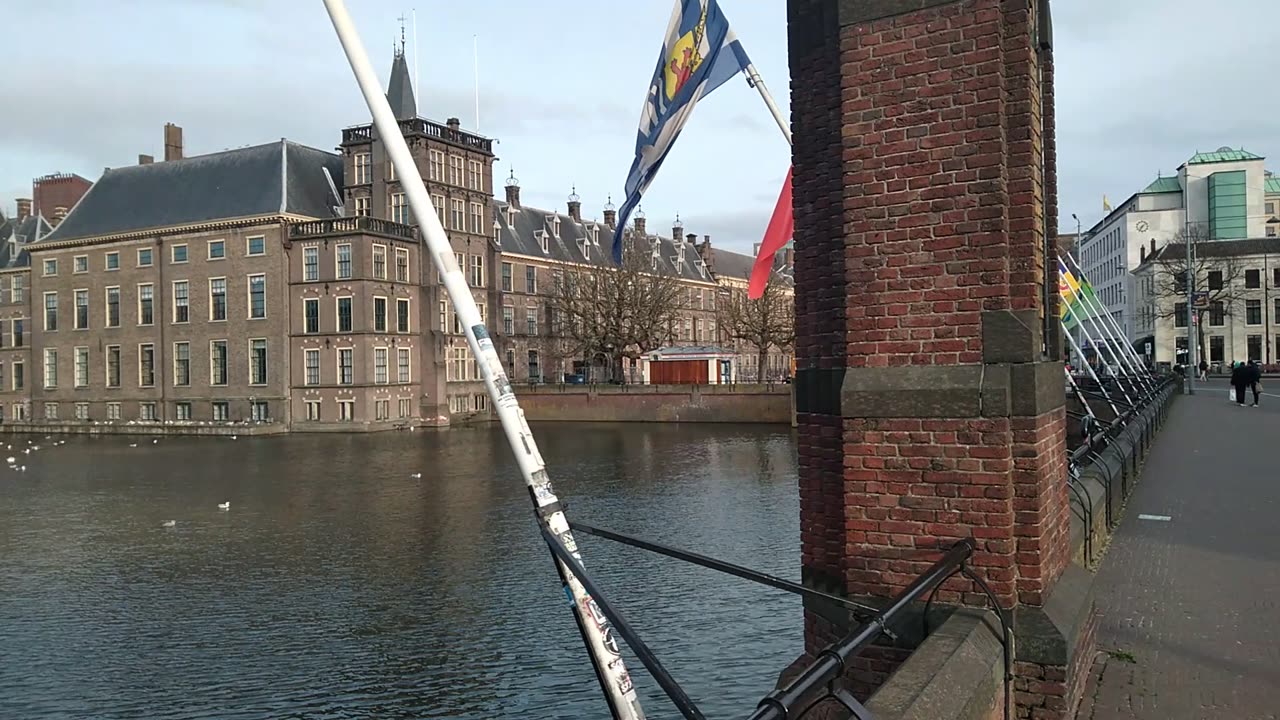Premium Only Content

Binnenhof, The Dutch Parliament Building, Amsterdam, The Netherlands
The Binnenhof (Dutch pronunciation: [ˈbɪnə(n)ˌɦɔf] ⓘ; English: Inner Court) is a complex of buildings in the city centre of The Hague, Netherlands, next to the Hofvijver (Court Pond). It houses the meeting place of both houses of the States General of the Netherlands, as well as the Ministry of General Affairs and the office of the Prime Minister of the Netherlands. Built primarily in the 13th century, the Gothic castle originally functioned as residence of the counts of Holland and became the political centre of the Dutch Republic in 1584. Together with the Buitenhof it is ranked among the Top 100 Dutch heritage sites. The Binnenhof is among the oldest parliament buildings in the world still in use.
History
Comital period
Counts of Holland
Reconstruction of the Binnenhof in ca. 1280
Little is known about the origin of the Binnenhof. Count of Holland Floris IV purchased the grounds of the Binnenhof in 1229 from Dirk van Wassenaer [nl] and built a hunting lodge.[1] Despite Floris IV's purchase, his successor William II is often credited with the foundation of the Binnenhof, after he became King of the Romans in 1248.[2] Presumably, he started the building of the Ridderzaal,[3] a great hall where the Count could receive guests.[4] The Ridderzaal was finished under the reign of Floris V, during which the buildings were also walled in, including a gate, and the Hofkapel [nl] was built. The Binnenhof was separated in a public part, which included the Ridderzaal, and a private area for residence and private meetings (now part of the Rolgebouw).[4]
Counts of Hainaut
After the house of Holland died out in 1299, the county fell into the hands of the counts of Hainaut (Dutch: Henegouwen). The counts of Hainaut barely resided in the Binnenhof in the early 14th century and the only addition was the De Lairesse building (which included the De Lairessezaal).[5]
Dukes of Bavaria
The Binnenhof came to life again and was expanded when it came into the hands of the dukes of Bavaria. Albert I (r. 1358–1404) was the first to more or less permanently use the Binnenhof as primary residence. He also incentivised the town of The Hague to grow near the Binnenhof.[6] After Albert I's reign, the ongoing Hook and Cod wars caused his successors William II and Jacqueline to stay less and less in the limited defensible Binnenhof, leading to a decay in importance and building activity.[7]
Duchy of Burgundy
The Treaty of Delft in 1428 brought peace to Holland, but also incorporated the county into the Duchy of Burgundy.[8] The Duke of Burgundy visited the Binnenhof infrequently.[8] As a result, following Jacqueline's death, the private area of the Binnenhof remained unoccupied. In the public area, the Duke's representative in Holland, the stadtholder of Holland, utilized the offices. A new quarter was constructed on the far west side of the Binnenhof for the stadtholders and their families.[9] The Duke or stadtholder also met with the States of Holland and West Friesland in the council chamber of the ridderhuis. Beginning in the mid-15th century, the Hof van Holland and Grafelijkheidsrekenkamer were also housed at the Binnenhof.
-
 21:24
21:24
Professor Nez
1 hour ago🚨WOW! Trump got EMOTIONAL when RFK Jr. Said THIS!
11910 -
 LIVE
LIVE
Jeff Ahern
1 hour agoNever woke Wednesday with Jeff Ahern
89 watching -
 1:06:21
1:06:21
Timcast
3 hours agoLiberals DEFEND Nazi Tattoo On Communist Democrat Senate Candidate, ITS A CULT
120K138 -
 LIVE
LIVE
Side Scrollers Podcast
2 days ago🔴FIRST EVER RUMBLE SUB-A-THON🔴DAY 3🔴100% REVENUE HELPS CHANGE CULTURE!
1,271 watching -
 25:57
25:57
The Kevin Trudeau Show Limitless
5 hours agoThe Sound Of Control: This Is How They Program You
3.4K5 -
 LIVE
LIVE
Dr Disrespect
4 hours ago🔴LIVE - DR DISRESPECT - BATTLEFIELD 6 KILL CHALLENGE - VS VISS
1,202 watching -
 11:32
11:32
Sponsored By Jesus Podcast
3 days agoWhat “Speaking the Truth in Love” REALLY Means | Tension of Grace and Truth
10.6K6 -
 29:40
29:40
Paul Barron Network
2 days ago $0.38 earnedCrypto ETFs Launching... Even With Government SHUT DOWN?! 🤯 Grayscale INTERVIEW
7.92K -
 1:12:32
1:12:32
PatriotStreetfighter
23 hours ago10.21.25 Patriot Streetfighter w/ Sam Anthony, Citizen Journalist Platform Exploding!
13K7 -
 40:48
40:48
Sean Unpaved
3 hours agoQB Carnage: Woody's Wrath, Payton's Shade, & Saban's Bold CFB Statement
15.4K